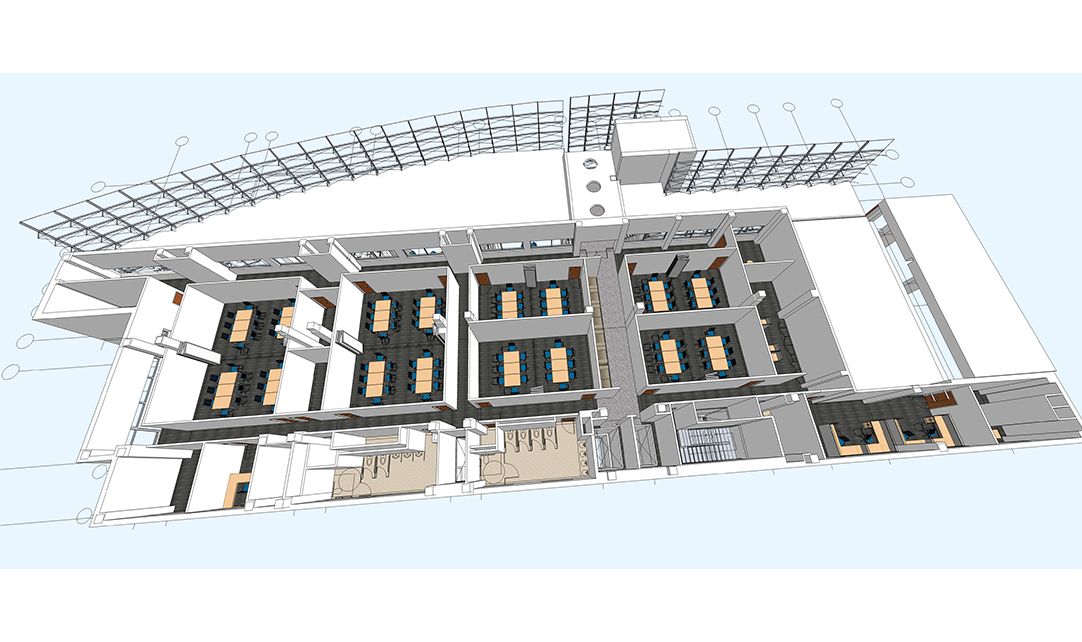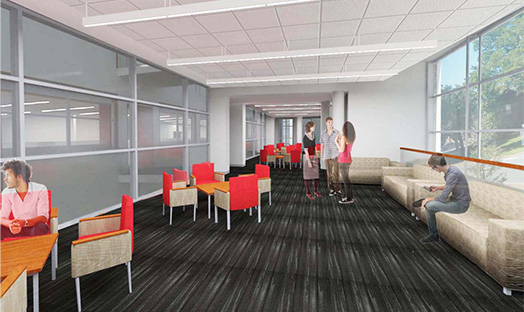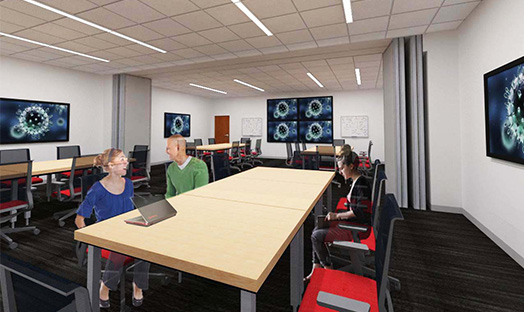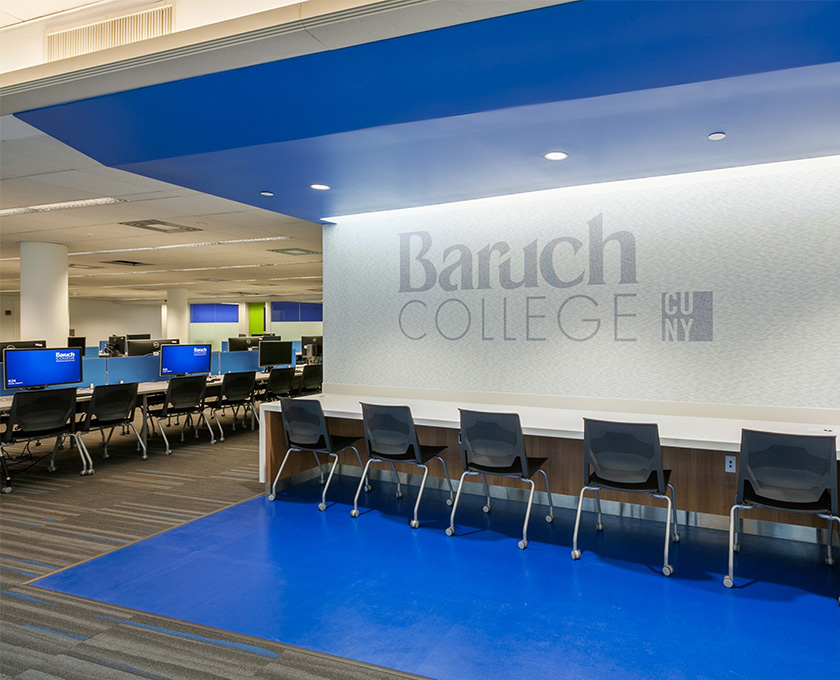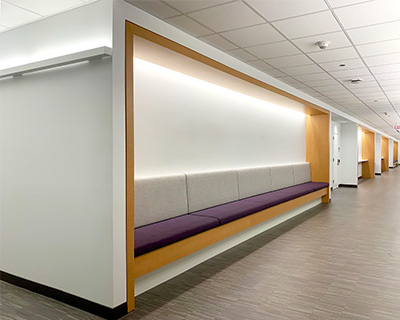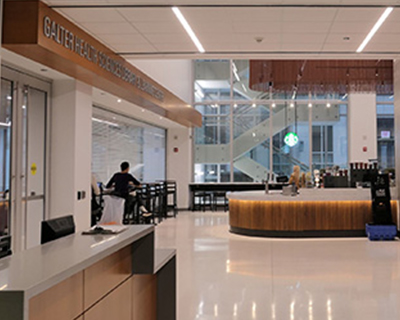Recent national reforms in medical school curricula are influencing the planning and design of new education spaces. With the adoption of new teaching methods that focus on experiential and collaborative learning, existing facilities need to be modernized or repurposed to accommodate the increasing use of multimedia and mobile technologies. In 2015, B+MD Architects evaluated the programmatic needs of the undergraduate medical education curriculum at Vanderbilt University School of Medicine to repurpose the Eskind Biomedical Library into the new home of the Health Sciences Education program.
More info
Recent national reforms in medical school curricula are influencing the planning and design of new education spaces. With the adoption of new teaching methods that focus on experiential and collaborative learning, existing facilities need to be modernized or repurposed to accommodate the increasing use of multimedia and mobile technologies. In 2015, B+MD Architects evaluated the programmatic needs of the undergraduate medical education curriculum at Vanderbilt University School of Medicine to repurpose the Eskind Biomedical Library into the new home of the Health Sciences Education program.
While the entry floor of the former library became a student study lounge, the top floor was renovated for administration and faculty offices. The two remaining floors were converted into small classrooms, each for 8-10 students, and one large, Team based Learning classroom for Active Learning. The small classrooms are able to expand in size via operable partitions. The large Active Learning classroom has ceiling mounted projectors which can be individually operated by each table of students or all controlled together by professors in each class.
Less info
